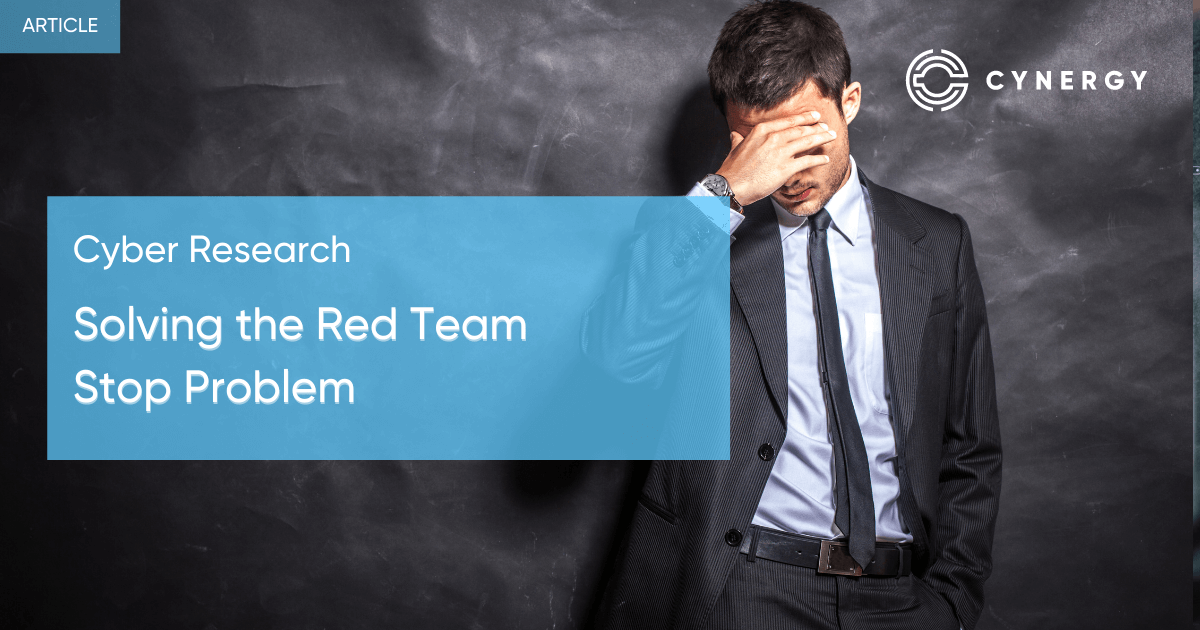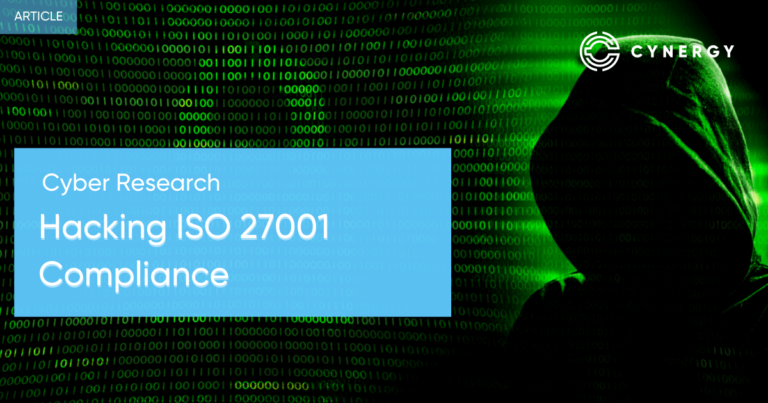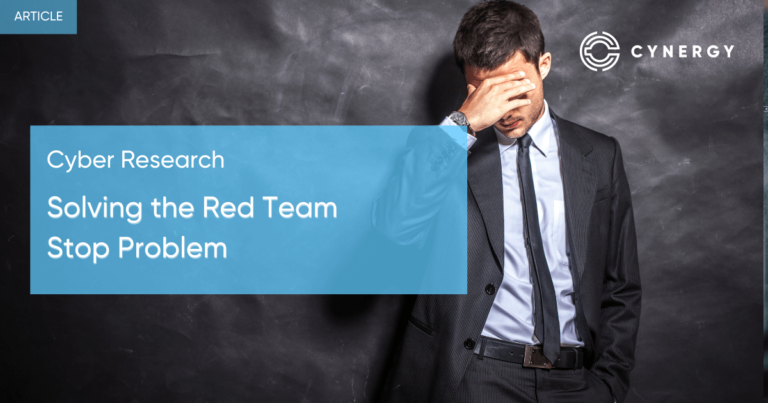Red teaming is an effective way for organizations to uncover critical security posture weaknesses. Typically, the process exposes gaps in defenses. So, security teams can address the flaws before malicious actors can exploit them. In some cases, businesses recruit an internal red team to handle the pen testing activity. Most of the time, they contract a third party to carry out planned attacks to expose vulnerabilities in networks and systems
Whether you use an in-house team or an external vendor, it is not always clear when you should finish a Red-Team initiative. Has the Red-Team exposed all the critical paths to your organization’s crown jewels or not? Continue reading this post to learn ways you can solve the Red-Team stop problem.
Why Do I Need Red Teaming?
There are manifold ways for cybercriminals to attack an organization. For instance, they can exploit flaws in network infrastructure or applications. In other cases, hackers target employees and devices to launch malicious programs that steal information. With hackers nudging their creativity in developing new attack tactics, security breaches have become frequent and sophisticated. At the same time, modern hacking tools are becoming popular and readily available.
How can businesses respond to cybercriminals and their innovative technologies? The answer is to identify and fix vulnerabilities in networks and systems before hackers exploit them. Organizations also need to be consistent and proactive while looking for these flaws.
The process entails scanning IT environments for security vulnerabilities. Next, organizations can use penetration testing to discover ways hackers can exploit identified weaknesses. Finally, you need to develop a robust vulnerability management strategy to seal the weaknesses before attackers can exploit them.
1. Discover Security Flaws
Red Teaming simulation helps enterprises improve their security postures. The security initiative examines all possible attack surfaces before an actual attack. Some of the areas covered in the assessment include networks, operating systems, servers, and applications. A Red Team simulation also uncovers threats targeting the human aspect, such as social engineering and weak policies.
2. Prioritize Vulnerability Management
The Red Teaming process allows security teams to prioritize vulnerabilities based on the possible impacts associated with them. Naturally, security testing examines the extent of potential attacks. The insights help companies prioritize remediation and define short- and long-term plans. Organizations can then remediate the most severe weaknesses first.
3. Comply with Stringent Security Regulations
Besides enhancing security, Red Teaming ensures that your IT governance and testing framework complies with stringent regulations and industry best practices. Data security and privacy is a prevalent concern today. Organizations must adhere to various security standards such as HIPAA, ISO 27001, GDPR, and PCI DSS. Most regulatory authorities expect enterprises to demonstrate compliance by conducting audits. Red-Team simulation evaluates IT assets to identify weaknesses that affect data security and integrity. The process enhances data governance that adheres to regulations.
Request a Live Demo
Want to enhance your cybersecurity operations?
Are you looking for your first cybersecurity expert?
Want to gain visibility for your exposed assets?
You can request a live demo by scheduling date and time on our available hours:
Red Team Done Right
1. Emulate the Attacker’s Mind
A good Red-Teamer will approach the initiative with an open mind. In this case, the security expert will attempt to emulate a malicious attacker by probing for vulnerabilities in networks and systems. Next, the Red-Teamer tries different techniques, tactics, and tools to breach the target.
2. Adequate Planning
Proper planning is essential in security testing. Besides that, security analysts must execute the activity professionally. Lack of such principles and relevant experience result in substandard security testing outcomes that fail to reveal all existing vulnerabilities.
Planning the Red-Team simulation properly can minimize the impact on essential business operations and systems. Business disruption is a greater risk, and organizations should be cautious while testing systems in production.
3. Gather Information
It would help if you established a risk baseline to improve your cybersecurity posture. Background information defines Red-Team goals and helps the security team to focus efforts where they are needed the most. It is vital to conduct network surveys to identify all reachable systems and devices. Red-Teamers gather details about host IP addresses, internet service providers, server names, and network maps.
4. Use the Right Tools
Undoubtedly, there exists a myriad of security testing tools. But you need to understand what tools you use where and their configuration needs. Unless you have an experienced security team in-house, you may consider engaging a third-party provider with relevant expertise.
More frequently, automation tools are worth considering. They offer capabilities to validate defenses and detect flaws continuously with minimum human intervention.
5. Appropriate Reporting
Red-Teamers must produce accessible and transparent reports to help the organization understand discovered vulnerabilities and their potential impact on the business. It is vital to generate readily comprehensible documents that explain the flaws and remediation measures.
6. Test Regularly
Annual Red-Team simulation is standard among enterprises. However, the strategy does not provide enough insights into your security posture. In effect, organizations should validate their security controls continually. Frequent assessment of exposed systems ensures that a business puts in place active security controls. This requirement makes another justification that a firm needs automated pen-testing solutions.
7. Remediate
Organizations should ensure that relevant personnel act on Red-Team results. The best approach would be first to prioritize critical paths for the organization’s crown jewels. Then, determine the necessary resources and timeliness needed to address them. Ongoing security testing is necessary to ensure that you have adequately tackled all identified flaws.

When to Stop the Red Team?
A Red-Team project ends with the presentation of a formal document featuring all the findings and explanations of the path to the agreed crown jewels and KPIs. Companies should ensure they cover all assets, including those that are visible on the internet. Examples include web applications, company websites, domain name servers, and email servers. Apart from the online services, Red-Teaming should cover insider threats. Insiders include rogue employees, unsuspecting users, third parties, and other stakeholders.
However, a Red-Team initiative should not be a one-time task. Systems and networks are dynamic, requiring continuous assessments. At the same time, new systems introduce vulnerabilities that attackers exploit. Therefore, it is essential to make continuous Red-Teaming a part of the development cycle. Organizations should also conduct security assessments after every significant product release.
Continuous Red-Teaming with Cynergy
You can partner with Cynergy to enhance your Red-Team initiatives. Cynergy’s solution provides broad asset discovery in zero time. You can continuously identify all assets associated with your organization. The Cynergy platform effectively discovers assets from the web, publicly exposed cloud interfaces, websites, subdomains, and employees’ leaked data.
We also build strategic plans for cybersecurity enhancement. Cynergy establishes your security posture by trying to exploit your weaknesses. With advanced tools and expertise, we can highlight the vulnerabilities that need attention. Based on the insights, Cynergy develops a prioritized action plan. Organizations can act upon the plan directly from the Cynergy platform.






